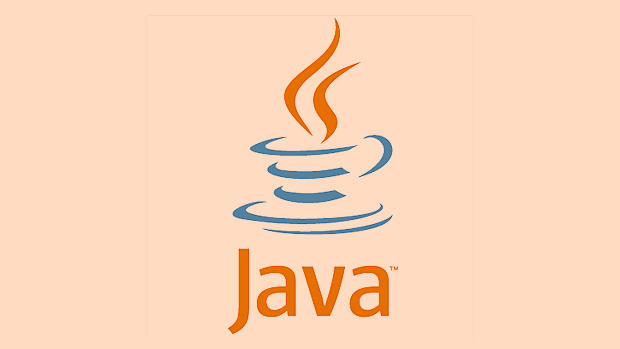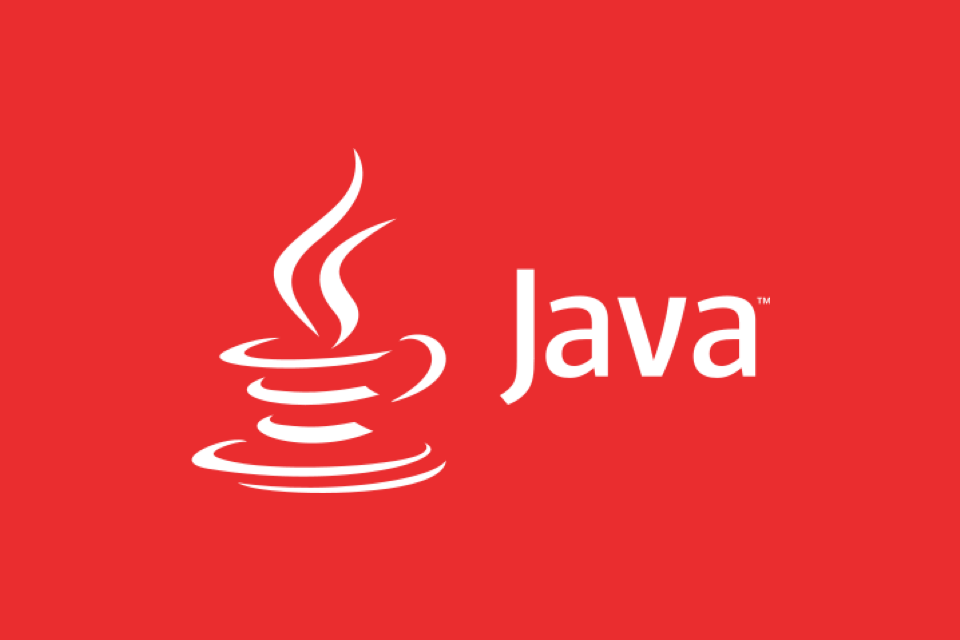The Java Reflection API allows programs to dynamically obtain class information and operate fields, methods, and constructors at runtime, and supports creating instances, calling methods and accessing private members; 2. The three ways to obtain Class objects are: class name.class, object.getClass(), and Class.forName("fullly qualified name"), and the third type needs to handle ClassNotFoundException; 3. You can get fields through getDeclaredField() and getField(), setAccessible(true) breaks through access restrictions and cooperates with get() and set() operation values; 4. Use getDeclaredMethod() to get methods (including private), and call them through invoke(), and support parameter type matching; 5. Use getConstructor() or getDeclaredConstructor() to get the constructor, and then create the object in newInstance(). The private constructor must first setAccessible(true); 6. It is widely used in frameworks such as Spring dependency injection, Jackson serialization, JUnit testing, Hibernate ORM, etc. to achieve automated object operations; 7. The reflection performance is low, and due to limited security checks and JIT optimization, it is recommended to cache reflected objects and avoid high-frequency calls; 8. There are security risks, such as destroying encapsulation and deserialization vulnerabilities, and should be restricted to use in a controlled environment to avoid openness to untrusted inputs; 9. To obtain generic information, you must use the getGenericXxx() method, such as getGenericReturnType() Or getGenericType(), return the ParameterizedType type; 10. Best practices include: prioritizing getDeclaredXxx(), carefully calling setAccessible(true), cache reflective objects, properly handling exceptions, and avoiding abuse of reflection to replace normal design patterns. Only by correctly understanding and rational use of reflections can we avoid performance and safety risks while improving flexibility.

The Java Reflection API is a powerful mechanism provided by Java, allowing programs to check, access and modify structural information such as classes, methods, fields, constructors at runtime, and even call methods or operate fields at runtime without knowing their existence at compile time. This "introduction" ability is widely used in framework development, dependency injection, serialization, testing tools and other scenarios.

This article will give you a comprehensive understanding of the core capabilities, usage, best practices, and potential risks of the Java Reflection API.
1. What is Java Reflection?
Reflection refers to the ability of a program to dynamically obtain class information and operate classes or objects at runtime. Under normal circumstances, Java code is compiled and executed through the JVM. While using reflection, you can run:

- Get the class name, modifier, parent class, and implementation interface
- Get the fields, methods, and constructor of the class
- Create an object instance
- Calling methods
- Access and modify field values (including private fields)
This breaks the encapsulation, but also brings great flexibility.
Class<?> clazz = String.class; // Get Class object Object obj = clazz.newInstance(); // Create an instance (outdated, it is recommended to use Constructor)
2. Three ways to get Class objects
Before using reflection, you must first get Class object. There are three common ways:

Calling
.classby class nameClass<String> clazz = String.class;
Calling
.getClass()via objectString str = "hello"; Class<? extends String> clazz = str.getClass();
Use
Class.forName()via the fully qualified name of the classClass<?> clazz = Class.forName("java.lang.String");
?? Note:
Class.forName()may throwClassNotFoundExceptionand needs to be processed.
3. Use reflection operation class members
Get Field (Field)
You can get the fields of the class (including public, private, etc.) and read or modify its values.
Field field = clazz.getDeclaredField("value"); // Get private field field.setAccessible(true); // Break through access restrictions String value = (String) field.get(obj); // Get field value field.set(obj, "new value"); // Set field value-
getDeclaredField(): Get the fields declared by this class (excluding inheritance) -
getField(): Only public fields (including inherited)
Get method (Method)
Methods that call objects, including private methods.
Method method = clazz.getDeclaredMethod("toString");
method.setAccessible(true);
String result = (String) method.invoke(obj); // Call methodSupport parameter and return value type matching:
Method method = clazz.getDeclaredMethod("substring", int.class, int.class);
String result = (String) method.invoke(str, 0, 3);Get the constructor
Dynamically create object instances.
Constructor<?> cons = clazz.getConstructor(String.class);
Object obj = cons.newInstance("hello");Supports getting private constructors and instantiating:
Constructor<?> cons = clazz.getDeclaredConstructor(); cons.setAccessible(true); Object obj = cons.newInstance();
4. Practical application scenarios
(1) Framework development (such as Spring, MyBatis)
Spring's dependency injection (DI) is achieved through reflection. It scans classes with annotations such as @Component and @Service , and creates instances and injects dependencies through reflection.
(2) Serialization and deserialization (such as Jackson, Gson)
The JSON library reads object fields by reflection, converts them to JSON strings, and vice versa. Even if the field is private, it can be accessed through setAccessible(true) .
(3) Unit tests (such as JUnit)
JUnit uses reflection to call methods marked by @Test annotation without hard-coded method names.
(4) ORM framework (such as Hibernate)
When mapping database records into Java objects, set field values by reflection to achieve automatic filling.
5. Performance and safety issues of reflection
Performance overhead
Reflection operation is slower than direct call, and the reasons include:
- Method calls require security checks
- The compiler cannot optimize the reflection code
- JIT optimization is limited
suggestion :
- Avoid frequent use of reflections in high-frequency paths
- Caches
Method,Field,Constructorobjects to reduce duplicate searches
Security risks
- Destroy encapsulation (access to private members)
- Possible bypassing security policies (such as security managers)
- It is easy to introduce vulnerabilities (such as deserialization attacks)
suggestion :
- Try to use only in controlled environments (such as internal frameworks)
- Avoid using reflection on untrusted inputs
- Restrict reflection access using a module system (Java 9)
6. Reflection and Generics
To obtain generic information in reflection, you need to use getGenericXxx() method:
Method method = list.getClass().getMethod("add", Object.class);
Type returnType = method.getGenericReturnType(); // It may be ParameterizedType For example, get the generic type in List<String> :
ParameterizedType type = (ParameterizedType) field.getGenericType(); Type actualType = type.getActualTypeArguments()[0]; // String.class
7. Common Traps and Best Practices
- ? Use
getDeclaredXxx()to get all members of this class (including private) - ? Consider security impact before calling
setAccessible(true) - ? Cache reflective objects for performance
- ? Handle exceptions (
NoSuchFieldException,IllegalAccessException, etc.) - ? Avoid abuse of reflections in business logic
- ? Do not use it to replace normal design patterns (such as policy patterns)
Conclusion
The Java Reflection API is a double-edged sword: it gives programs extremely strong dynamic capabilities and is widely used in the modern Java ecosystem, but it is also accompanied by performance loss and security risks. Only by understanding its principles, using them reasonably, and avoiding traps can it truly exert its value.
Basically, that’s all. If you master reflection, you will be one step closer to “understanding the framework source code”.
The above is the detailed content of The Ultimate Guide to Java Reflection API. For more information, please follow other related articles on the PHP Chinese website!

Hot AI Tools

Undress AI Tool
Undress images for free

Undresser.AI Undress
AI-powered app for creating realistic nude photos

AI Clothes Remover
Online AI tool for removing clothes from photos.

Clothoff.io
AI clothes remover

Video Face Swap
Swap faces in any video effortlessly with our completely free AI face swap tool!

Hot Article

Hot Tools

Notepad++7.3.1
Easy-to-use and free code editor

SublimeText3 Chinese version
Chinese version, very easy to use

Zend Studio 13.0.1
Powerful PHP integrated development environment

Dreamweaver CS6
Visual web development tools

SublimeText3 Mac version
God-level code editing software (SublimeText3)
 Asynchronous Programming Techniques in Modern Java
Jul 07, 2025 am 02:24 AM
Asynchronous Programming Techniques in Modern Java
Jul 07, 2025 am 02:24 AM
Java supports asynchronous programming including the use of CompletableFuture, responsive streams (such as ProjectReactor), and virtual threads in Java19. 1.CompletableFuture improves code readability and maintenance through chain calls, and supports task orchestration and exception handling; 2. ProjectReactor provides Mono and Flux types to implement responsive programming, with backpressure mechanism and rich operators; 3. Virtual threads reduce concurrency costs, are suitable for I/O-intensive tasks, and are lighter and easier to expand than traditional platform threads. Each method has applicable scenarios, and appropriate tools should be selected according to your needs and mixed models should be avoided to maintain simplicity
 Best Practices for Using Enums in Java
Jul 07, 2025 am 02:35 AM
Best Practices for Using Enums in Java
Jul 07, 2025 am 02:35 AM
In Java, enums are suitable for representing fixed constant sets. Best practices include: 1. Use enum to represent fixed state or options to improve type safety and readability; 2. Add properties and methods to enums to enhance flexibility, such as defining fields, constructors, helper methods, etc.; 3. Use EnumMap and EnumSet to improve performance and type safety because they are more efficient based on arrays; 4. Avoid abuse of enums, such as dynamic values, frequent changes or complex logic scenarios, which should be replaced by other methods. Correct use of enum can improve code quality and reduce errors, but you need to pay attention to its applicable boundaries.
 Understanding Java NIO and Its Advantages
Jul 08, 2025 am 02:55 AM
Understanding Java NIO and Its Advantages
Jul 08, 2025 am 02:55 AM
JavaNIO is a new IOAPI introduced by Java 1.4. 1) is aimed at buffers and channels, 2) contains Buffer, Channel and Selector core components, 3) supports non-blocking mode, and 4) handles concurrent connections more efficiently than traditional IO. Its advantages are reflected in: 1) Non-blocking IO reduces thread overhead, 2) Buffer improves data transmission efficiency, 3) Selector realizes multiplexing, and 4) Memory mapping speeds up file reading and writing. Note when using: 1) The flip/clear operation of the Buffer is easy to be confused, 2) Incomplete data needs to be processed manually without blocking, 3) Selector registration must be canceled in time, 4) NIO is not suitable for all scenarios.
 How Java ClassLoaders Work Internally
Jul 06, 2025 am 02:53 AM
How Java ClassLoaders Work Internally
Jul 06, 2025 am 02:53 AM
Java's class loading mechanism is implemented through ClassLoader, and its core workflow is divided into three stages: loading, linking and initialization. During the loading phase, ClassLoader dynamically reads the bytecode of the class and creates Class objects; links include verifying the correctness of the class, allocating memory to static variables, and parsing symbol references; initialization performs static code blocks and static variable assignments. Class loading adopts the parent delegation model, and prioritizes the parent class loader to find classes, and try Bootstrap, Extension, and ApplicationClassLoader in turn to ensure that the core class library is safe and avoids duplicate loading. Developers can customize ClassLoader, such as URLClassL
 Handling Common Java Exceptions Effectively
Jul 05, 2025 am 02:35 AM
Handling Common Java Exceptions Effectively
Jul 05, 2025 am 02:35 AM
The key to Java exception handling is to distinguish between checked and unchecked exceptions and use try-catch, finally and logging reasonably. 1. Checked exceptions such as IOException need to be forced to handle, which is suitable for expected external problems; 2. Unchecked exceptions such as NullPointerException are usually caused by program logic errors and are runtime errors; 3. When catching exceptions, they should be specific and clear to avoid general capture of Exception; 4. It is recommended to use try-with-resources to automatically close resources to reduce manual cleaning of code; 5. In exception handling, detailed information should be recorded in combination with log frameworks to facilitate later
 How does a HashMap work internally in Java?
Jul 15, 2025 am 03:10 AM
How does a HashMap work internally in Java?
Jul 15, 2025 am 03:10 AM
HashMap implements key-value pair storage through hash tables in Java, and its core lies in quickly positioning data locations. 1. First use the hashCode() method of the key to generate a hash value and convert it into an array index through bit operations; 2. Different objects may generate the same hash value, resulting in conflicts. At this time, the node is mounted in the form of a linked list. After JDK8, the linked list is too long (default length 8) and it will be converted to a red and black tree to improve efficiency; 3. When using a custom class as a key, the equals() and hashCode() methods must be rewritten; 4. HashMap dynamically expands capacity. When the number of elements exceeds the capacity and multiplies by the load factor (default 0.75), expand and rehash; 5. HashMap is not thread-safe, and Concu should be used in multithreaded
 Explained: Java Polymorphism in Object-Oriented Programming
Jul 05, 2025 am 02:52 AM
Explained: Java Polymorphism in Object-Oriented Programming
Jul 05, 2025 am 02:52 AM
Polymorphism is one of the core features of Java object-oriented programming. Its core lies in "one interface, multiple implementations". It implements a unified interface to handle the behavior of different objects through inheritance, method rewriting and upward transformation. 1. Polymorphism allows the parent class to refer to subclass objects, and the corresponding methods are called according to the actual object during runtime; 2. The implementation needs to meet the three conditions of inheritance relationship, method rewriting and upward transformation; 3. It is often used to uniformly handle different subclass objects, collection storage and framework design; 4. When used, only the methods defined by the parent class can be called. New methods added to subclasses need to be transformed downward and accessed, and pay attention to type safety.
 Effective Use of Java Enums and Best Practices
Jul 07, 2025 am 02:43 AM
Effective Use of Java Enums and Best Practices
Jul 07, 2025 am 02:43 AM
Java enumerations not only represent constants, but can also encapsulate behavior, carry data, and implement interfaces. 1. Enumeration is a class used to define fixed instances, such as week and state, which is safer than strings or integers; 2. It can carry data and methods, such as passing values ??through constructors and providing access methods; 3. It can use switch to handle different logics, with clear structure; 4. It can implement interfaces or abstract methods to make differentiated behaviors of different enumeration values; 5. Pay attention to avoid abuse, hard-code comparison, dependence on ordinal values, and reasonably naming and serialization.






